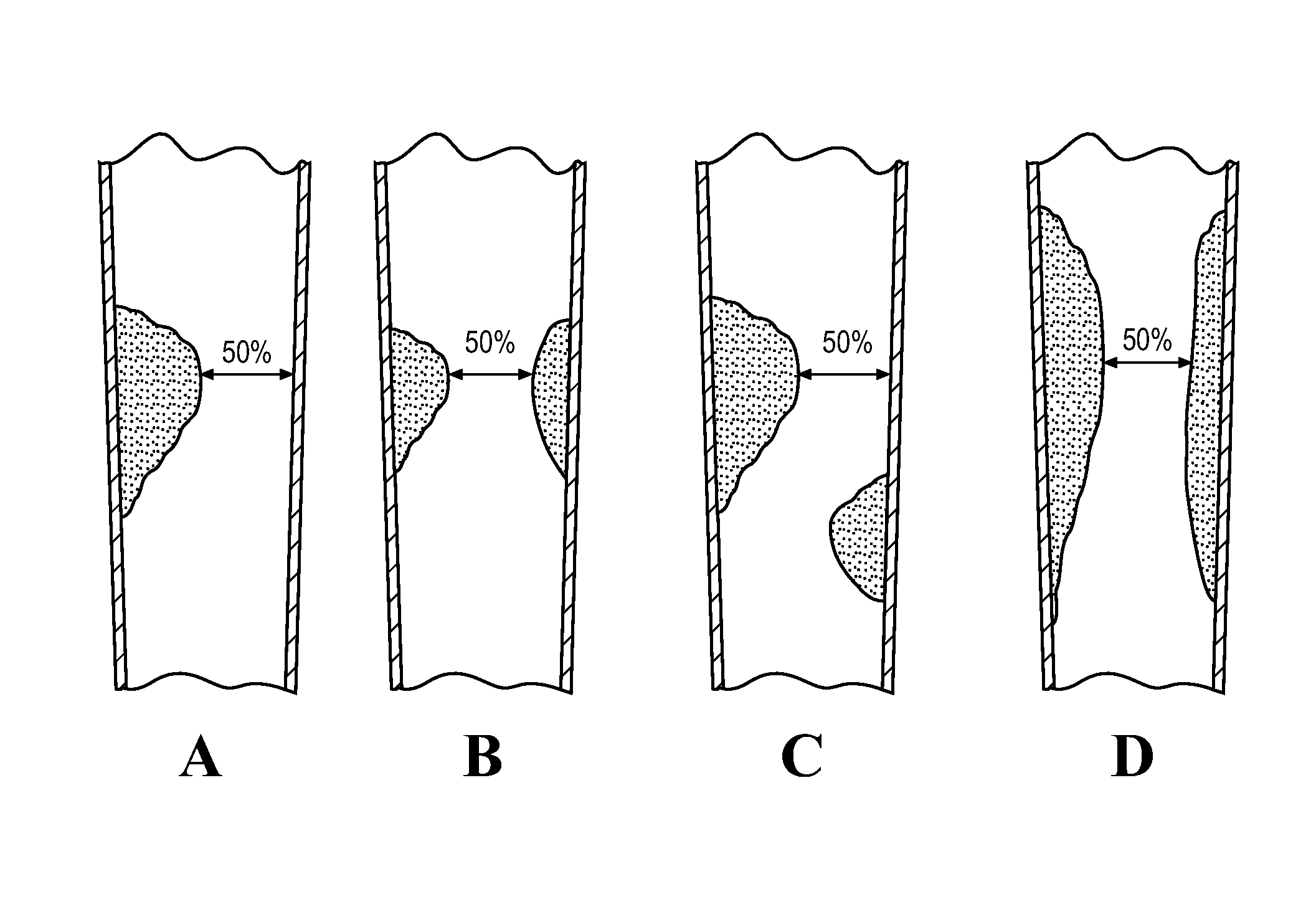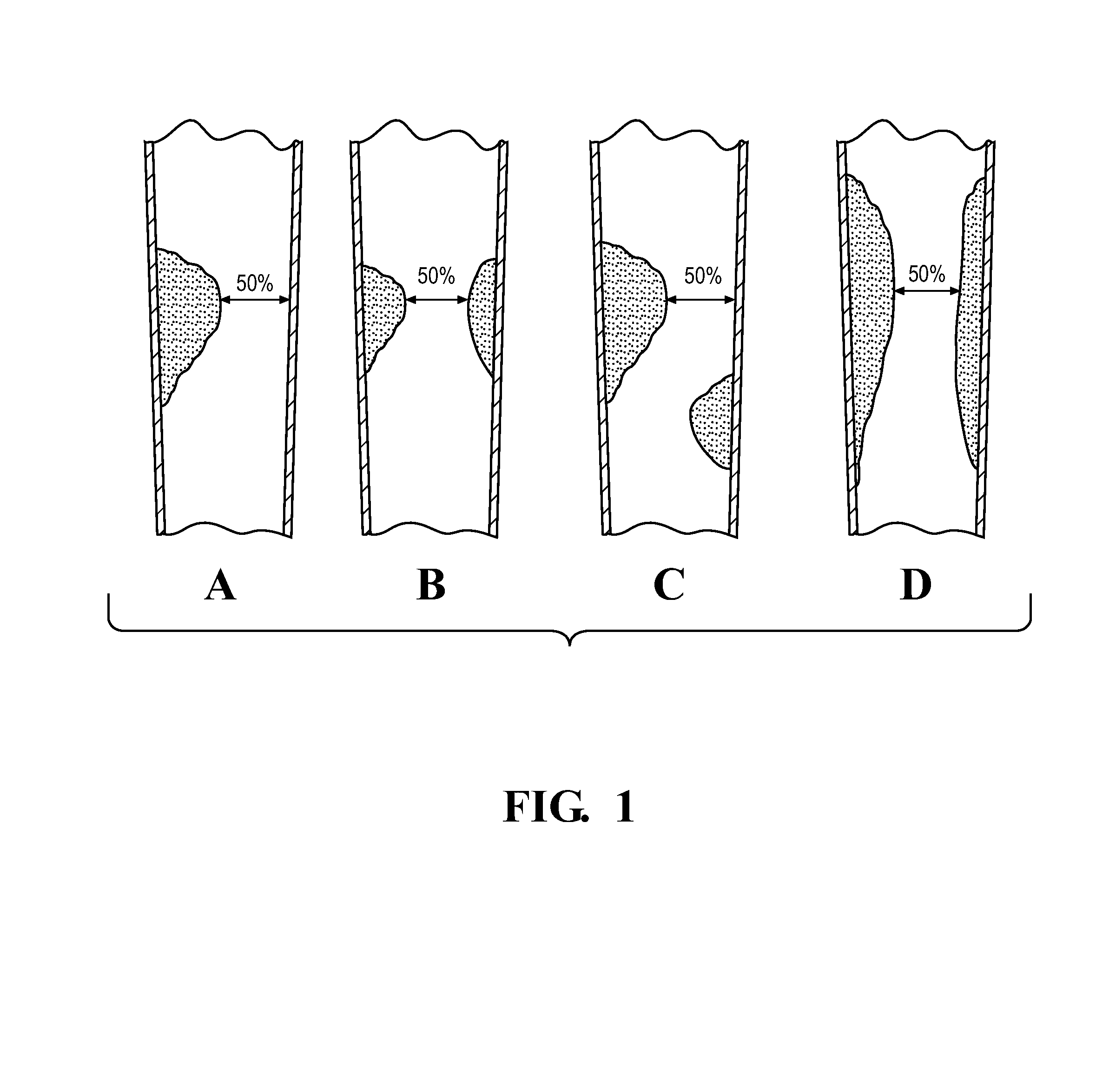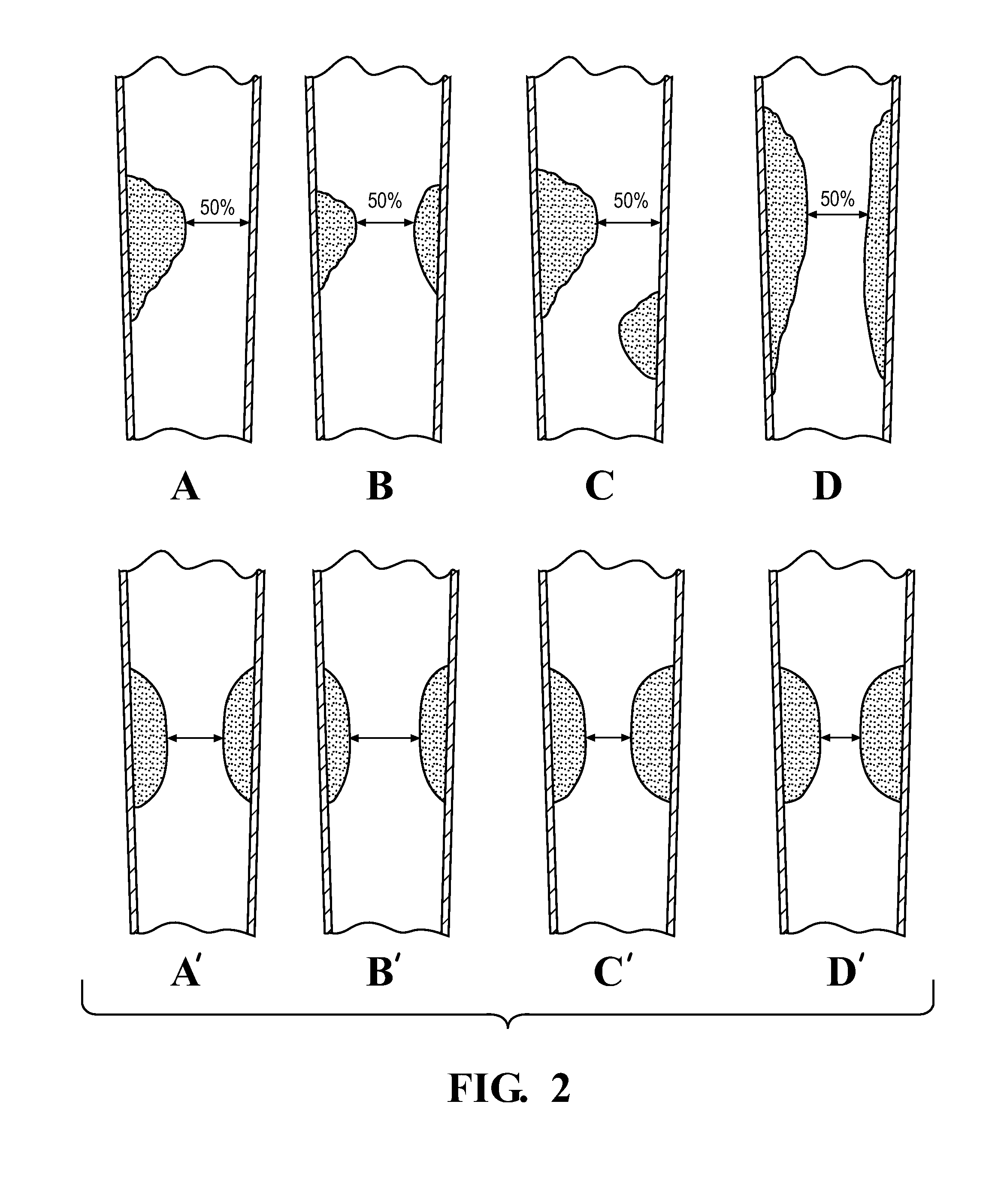Method for assessing stenosis severity through stenosis mapping
a technology of stenosis and severity, applied in the field of accurately identifying and diagnosing coronary artery disease, can solve the problems of significant number of low to mid-risk patients being unnecessarily admitted from emergency rooms to the hospital for further testing, and achieve the effect of less expensiv
- Summary
- Abstract
- Description
- Claims
- Application Information
AI Technical Summary
Benefits of technology
Problems solved by technology
Method used
Image
Examples
Embodiment Construction
[0029]The present disclosure relates to a method of determining the stenosis severity of an artery and particularly as it relates to irregular-shaped stenosis. It will be appreciated, however, that the present disclosure applies to any type of shaped stenosis or any sized stenosis. FIG. 3 schematically illustrates a method 10 in accordance with an aspect of the present disclosure. According to an aspect, relevant data about a patient to be evaluated is initially obtained, as generally indicated by reference number 12. The relevant patient data may include patient anatomical data and particularly imaging data of the pertinent areas of concern. The patient anatomical data may be obtained by using a noninvasive imaging method such as CCTA. According to CCTA, a computed tomography (CT) machine may be used to scan images of structures, such as the heart region for diagnosis of the coronary artery vessels. The scanned data that results from this imaging method generally includes a stack o...
PUM
 Login to View More
Login to View More Abstract
Description
Claims
Application Information
 Login to View More
Login to View More - R&D
- Intellectual Property
- Life Sciences
- Materials
- Tech Scout
- Unparalleled Data Quality
- Higher Quality Content
- 60% Fewer Hallucinations
Browse by: Latest US Patents, China's latest patents, Technical Efficacy Thesaurus, Application Domain, Technology Topic, Popular Technical Reports.
© 2025 PatSnap. All rights reserved.Legal|Privacy policy|Modern Slavery Act Transparency Statement|Sitemap|About US| Contact US: help@patsnap.com



